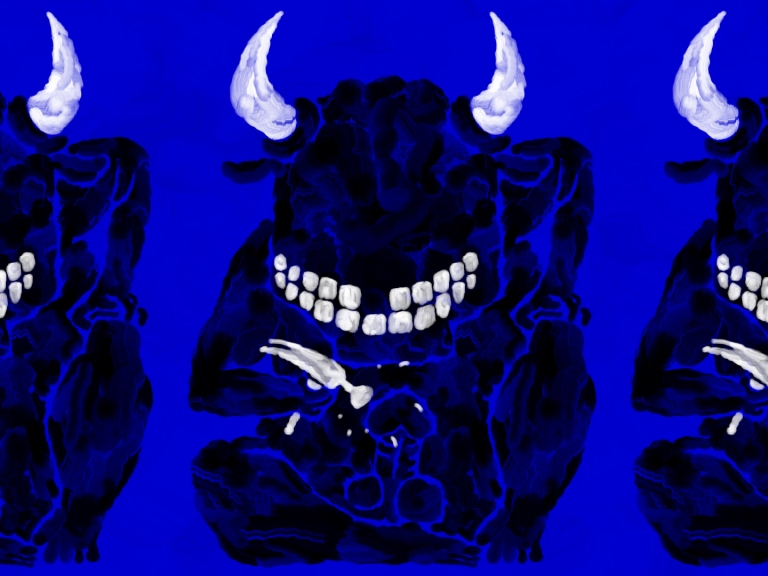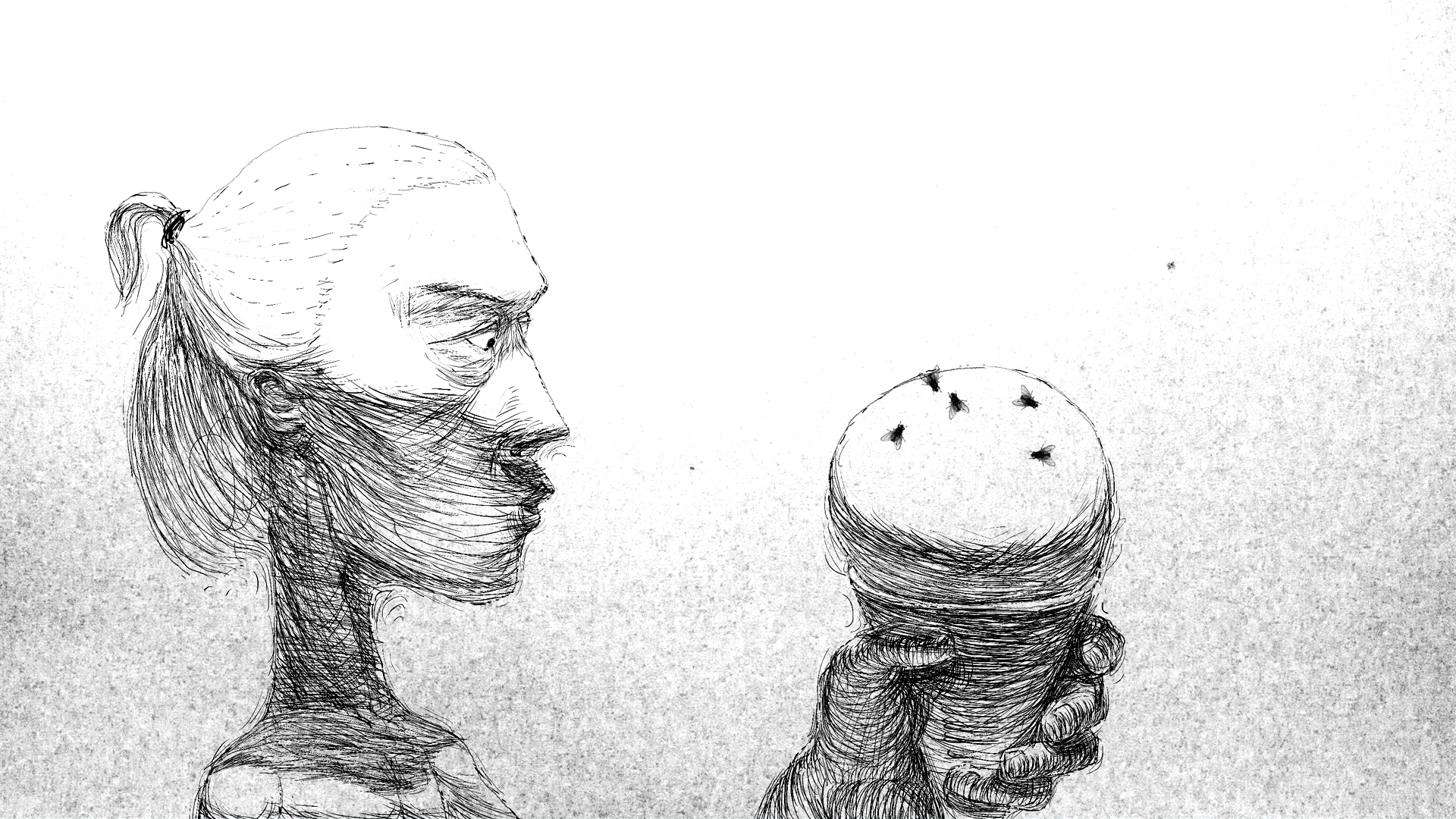Eshadows interviewed the director and animator Shen Jie.
Please introduce yourself;
Shen Jie (26/10/1989), grew up in Shanghai. I graduated from the Shanghai Institute of Technology in 2012. I am still living and working in Shanghai.
How and what made you get into animation?
Before I was into animation I was already interested in illustration. During my second year at university we had the occasional animation class and the teacher would show us some animations and tell us to make our own using Flash. After this I was convinced of the power of animation, how a time line and one illustrated frame after one illustrated frame could better represent my thoughts and ideas.

So where did you learn the techniques and skills required?
University animation and film classes gave me the opportunity to experience animation, but the main focus of these classes was on the software, like Flash and AfterEffects. So I watched more lessons online, learning about how exactly animations were put together and moved. At the same time I was watching a lot of different animation and I believe I learnt more from these, they opened my eyes to the range of possibilities.
Where do you get the inspiration for your work?
I think I have been influenced by every animation I have ever seen, again opening up the world of things possible through animation. When I just started studying animation, Georges Schwizgebel’s work was a massive influence on me. In his work I could see how his way of looking at the world and animation was different, very unique.

Tell me about Horse (2013) what is going on in this film?
I wanted to make a film about time, I think the horse can symbolise time in some ways. The editing reveals the images about the horse in my brain slowly in the changing cycles.
The brushstrokes almost look like Chinese calligraphy, how influenced are you by traditional Chinese culture?
I think my work is more heavily influenced by European animation. But the longer I was working on this piece the more I saw the influence of traditional Chinese culture in it. That isn’t just in the superficial brush strokes or ink, but in the way some Asian cultures look and feel about certain things and how they behave. It made me realise what was all around me was also very interesting.

How difficult is it to make work like yours in China?
I used to work at a advertising company, and work on my animations in my spare time. Now I have my own advertising company, which isn’t what I am interested in but working for myself allows more freedom. I like to separate my art and passion from my work and I am lucky my films don’t require much in the way of a budget.
So up to now I haven’t looked to get funding from the government or other avenues. I don’t think my work is going to be liked by the masses, either here in China or abroad, and that doesn’t really concern me. I will still work on what I like doing, and that there are a small number of people who also like it is very satisfying.
How do you view the animation scene in China at the minute?
To be honest, this is not something I am interested in, it has nothing to do with me or my work. I do know that there are many people making their own animations in China today and there is even an independent animation film festival in China organised by these film makers.
What technology do you use?
I mainly use Photoshop and draw each scene, then use Aftereffects to put them together.

What have you got planned next?
After Horse I made Monkey in 2015, which is currently entered in a number of film and animation festivals. I might upload it to Vimeo next year. I am currently working on Panda, a 3 minute short, I think this will be online pretty soon.
Filmography:
Run (2012)
Stammer (2013)
Horse (2013)
Ya (2015)
Monkey (2105)
Shen Jie’s Vimeo Page: https://vimeo.com/user16760143
Original Interview:
Dear James,
Your Chinese is good and I can know your meaning. But I’m so sorry my English is not enough good to answer your questions, so I have to use Chinese.
Please tell us a little about yourself,
Shen Jie (26/10/1989, Shanghai). Graduated from Shanghai Institute of Technology in 2012. Currently lives and works in Shanghai.
Director‘s filmography: RUN! (2012), STAMMER (2013), HORSE (2013), YA (2015), MONKEY (2015)
What made you want to get into animation?
当我还没有接触动画的时候,更多是在画插画。但在我大学第二年的时候有动画课,老师给我们看一些动画短片,然后让我们用FLASH做一个动画。我当时就觉得动画很有意思,是一条时间线,和一张张插画相比,我更喜欢用动画去表达。
Where did you learn your craft?
大学的动画课和影视课,让我有机会接触到动画。但那些课程更多是在教软件,像FLASH,After effects。我也看过网上的教学,学习动画究竟是如何动起来的。同时,我大量地看不同类型的动画短片,我觉得我更多是从看片的过程中学习,让我知道动画可以是各种各样的。
Where do you get the inspiration for your work?
我受了我认为所有好作品的影响,让我知道动画有无数种可能。在刚刚开始学习动画的时候,Georges Schwizgebel的作品给了我极大的影响。从他的作品中看到了他对动画短片不一样的思维方式,很有自己的特点。
Tell me about Horse, what is going on there?
I want to make a film about time. I think the horse can symbolize time in some ways. The editing reveals the images about horse in my brain slowly in the changing cycles.
The artwork looks like Chinese calligraphy, how influenced are you by traditional Chinese culture?
我的作品更受欧洲的动画短片影响。但随着我从事短片创作的时间变长,看的东西更多之后,我越来越喜欢中国的传统文化,那并不是表面看到的毛笔笔刷,或是水墨,而是东方人所独有的看待和思考事物,以及行为的方法。让我觉得发生在自己身边的一切都很有意思。
How difficult is it to make work like yours in China?
我之前在广告公司工作,业余时间做自己的作品。现在是自由职业赚钱,做的还是广告,虽然不是我的风格,但觉得能赚到钱就好。我喜欢把自己的创作和赚钱完全分开。很幸运做我自己的作品不需要什么成本,所以目前为止没有申请过任何补贴,自己工作赚钱。我猜我的作品在国内国外可能都得不到很多人的喜欢,其实我也不太在乎,我依旧做我自己喜欢的作品,不过能得到少部分的人喜欢也已经让我满足。
How do you view the animation scene in China at the minute?
这是我毫不关心的问题 ,因为这和我的创作一点关系都没有。我只知道在中国有越来越多的人开始做自己的独立动画短片,每年也有真正关心独立动画的动画节在中国举办,是中国独立动画人自己发起的和策划的。
What kind of technology do you use?
我一般用Photoshop的笔刷一张一张地画,然后用After effects把它们连起来做成视频。
What have you got planned next and when can we see it?
在HORSE之后,我在2015年完成了MONKEY,它正在参加一些电影和动画节,我也许明年会把它放在VIMEO上。现在正在做PANDA,是一个3分钟的短片,我想很快就会做完放在网上。
My vimeo link:
The attachments are some film stills, please check them!
Thank you so much!
Best wishes,
SHEN Jie
